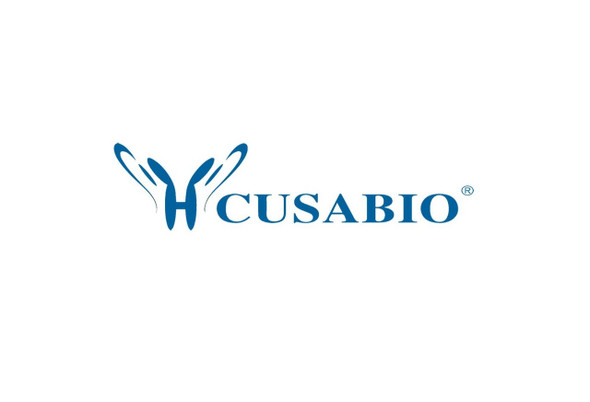Cusabio Human Recombinants
Recombinant Human Ryanodine receptor 1 (RYR1), partial | CSB-EP020619HU
- SKU:
- CSB-EP020619HU
- Availability:
- 3 - 7 Working Days
Description
Recombinant Human Ryanodine receptor 1 (RYR1), partial | CSB-EP020619HU | Cusabio
Alternative Name(s): Skeletal muscle calcium release channelSkeletal muscle ryanodine receptorSkeletal muscle-type ryanodine receptorType 1 ryanodine receptor
Gene Names: RYR1
Research Areas: Transport
Organism: Homo sapiens (Human)
AA Sequence: MGDAEGEDEVQFLRTDDEVVLQCSATVLKEQLKLCLAAEGFGNRLCFLEPTSNAQNVPPDLAICCFVLEQSLSVRALQEMLANTVEAGVESSQGGGHRTLLYGHAILLRHAHSRMYLSCLTTSRSMTDKLAFDVGLQEDATGEACWWTMHPASKQRSEGEKVRVGDDIILVSVSSERYLHLSTASGELQVDASFMQTLWNMNPICSRCEEGFVTGGHVLRLFHGHMDECLTISPADSDDQRRLVYYEGGAVCTHARSLWRLEPLRISWSGSHLRWGQPLRVRHVTTGQYLALTEDQGLVVVDASKAHTKATSFCFRISKEKLDVAPKRDVEGMGPPEIKYGESLCFVQHVASGLWLTYAAPDPKALRLGVLKKKAMLHQEGHMDDALSLTRCQQEESQAARMIHSTNGLYNQFIKSLDSFSGKPRGSGPPAGTALPIEGVILSLQDLIIYFEPPSEDLQHEEKQSKLRSLRNRQSLFQEEGMLSMVLNCIDRLNVYTTAAHFAEFAGEEAAESWKEIVNLLYELLASLIRGNRS
Source: E.coli
Tag Info: N-terminal 6xHis-tagged
Expression Region: 1-534aa
Sequence Info: Partial
MW: 63.3 kDa
Purity: Greater than 90% as determined by SDS-PAGE.
Relevance: Calcium channel that mediates the release of Ca2+ from the sarcoplasmic reticulum into the cytoplasm and thereby plays a key role in triggering muscle contraction following depolarization of T-tubules. Repeated very high-level exercise increases the open probability of the channel and leads to Ca2+ leaking into the cytoplasm. Can also mediate the release of Ca2+ from intracellular stores in neurons, and may thereby promote prolonged Ca2+ signaling in the brain. Required for normal bryonic development of muscle fibers and skeletal muscle. Required for normal heart morphogenesis, skin development and ossification during bryogenesis .
Reference: Samaritan myopathy, an ultimately benign congenital myopathy, is caused by a RYR1 mutation.Bohm J., Leshinsky-Silver E., Vassilopoulos S., Le Gras S., Lerman-Sagie T., Ginzberg M., Jost B., Lev D., Laporte J.Acta Neuropathol. 124:575-581(2012)
Storage: The shelf life is related to many factors, storage state, buffer ingredients, storage temperature and the stability of the protein itself. Generally, the shelf life of liquid form is 6 months at -20?/-80?. The shelf life of lyophilized form is 12 months at -20?/-80?.
Notes: Repeated freezing and thawing is not recommended. Store working aliquots at 4? for up to one week.
Function: Calcium channel that mediates the release of Ca(2+) from the sarcoplasmic reticulum into the cytoplasm and thereby plays a key role in triggering muscle contraction following depolarization of T-tubules
Involvement in disease: Malignant hyperthermia 1 (MHS1); Central core disease of muscle (CCD); Multiminicore disease with external ophthalmoplegia (MMDO)
Subcellular Location: Sarcoplasmic reticulum membrane, Multi-pass membrane protein, Sarcoplasmic reticulum
Protein Families: Ryanodine receptor (TC 1.A.3.1) family, RYR1 subfamily
Tissue Specificity: Skeletal muscle and brain (cerebellum and hippocampus).
Paythway: Calciumsignalingpathway
Form: Liquid or Lyophilized powder
Buffer: If the delivery form is liquid, the default storage buffer is Tris/PBS-based buffer, 5%-50% glycerol. If the delivery form is lyophilized powder, the buffer before lyophilization is Tris/PBS-based buffer, 6% Trehalose, pH 8.0.
Reconstitution: We recommend that this vial be briefly centrifuged prior to opening to bring the contents to the bottom. Please reconstitute protein in deionized sterile water to a concentration of 0.1-1.0 mg/mL.We recommend to add 5-50% of glycerol (final concentration) and aliquot for long-term storage at -20?/-80?. Our default final concentration of glycerol is 50%. Customers could use it as reference.
Uniprot ID: P21817
HGNC Database Link: HGNC
UniGene Database Link: UniGene
KEGG Database Link: KEGG
STRING Database Link: STRING
OMIM Database Link: OMIM









